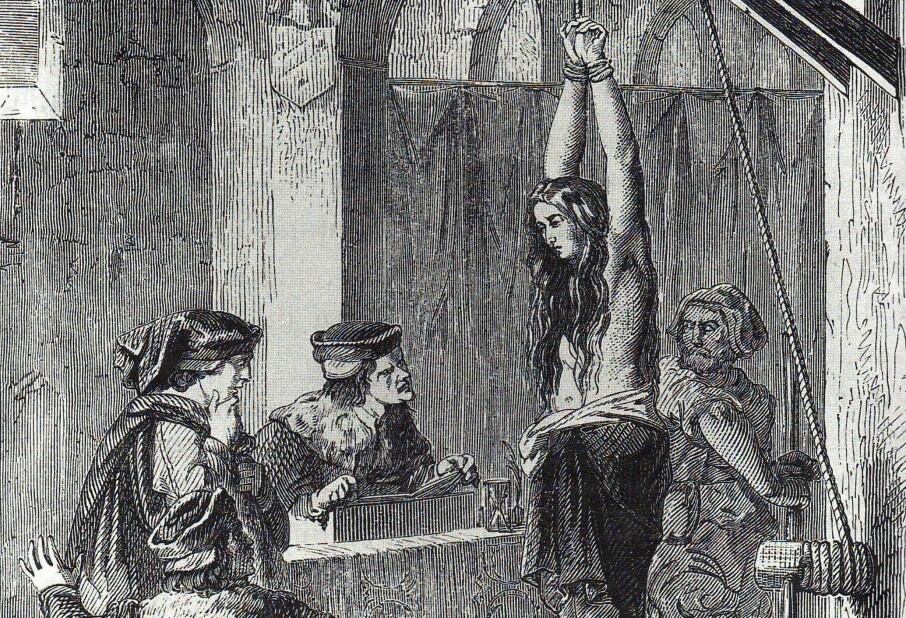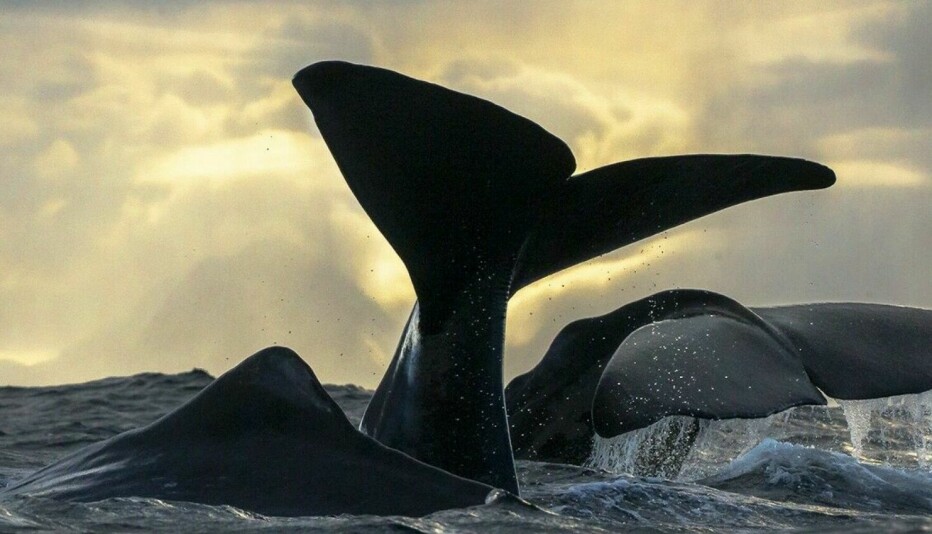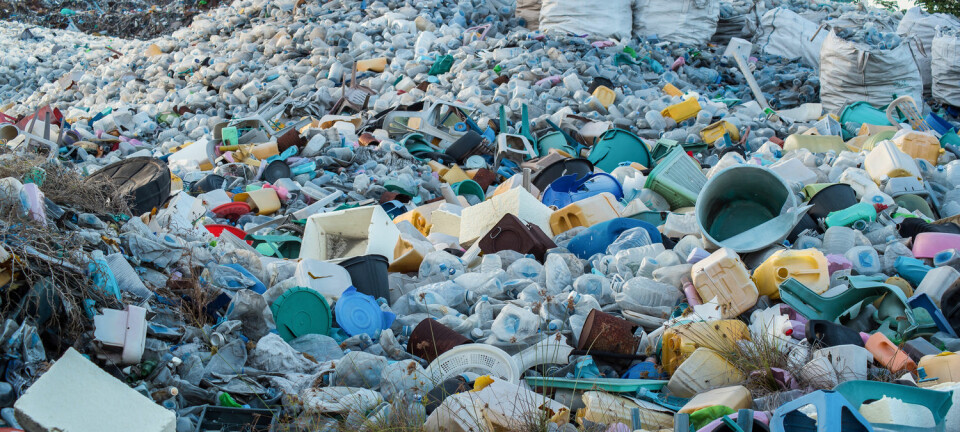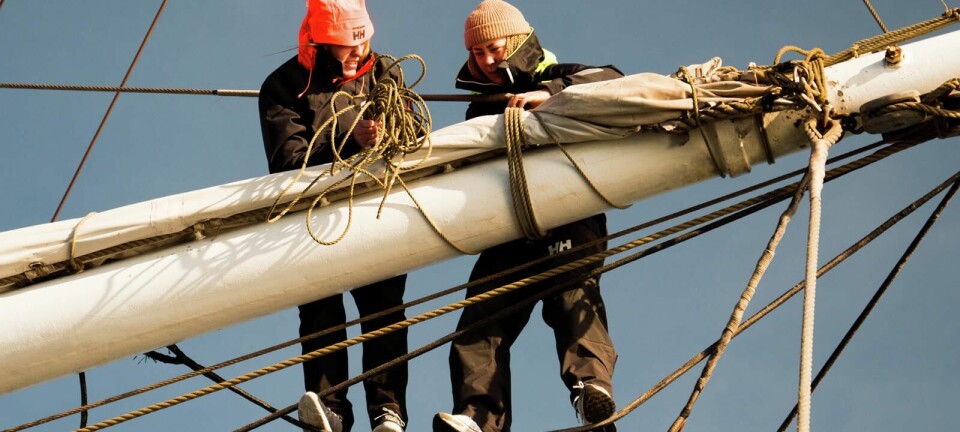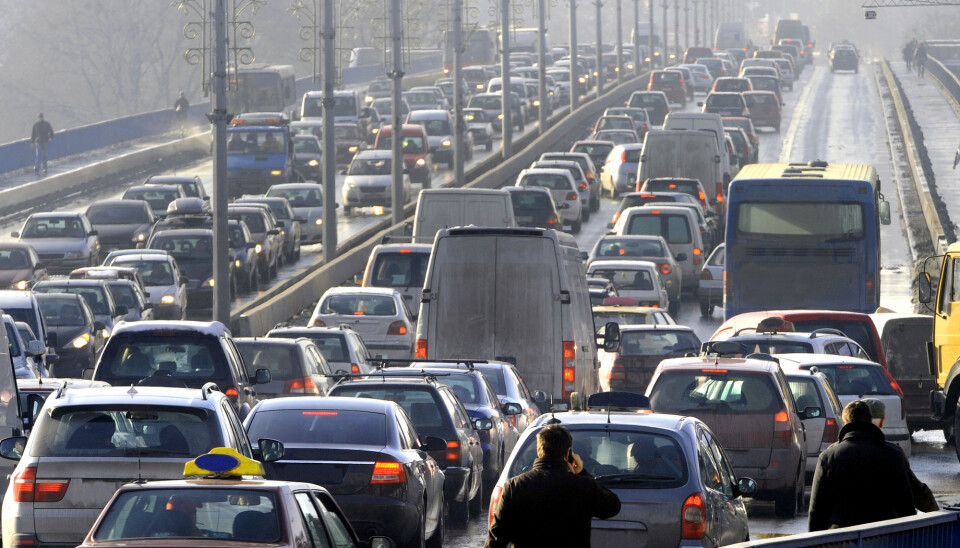
Microplastics generated by road traffic end up in the Arctic
Small plastic particles from car tyres and disc brakes swirl up, are caught up by the wind and float all the way to the Arctic.
Microplastics are almost certainly everywhere.
These tiny pieces of plastic are smaller than five millimetres and can consequently spread all over the world.
A disturbing amount ends up in the oceans, including in the Arctic, researchers say.
But where does all this plastic come from?
Not just via rivers and sewers
Until now, researchers have largely blamed rivers and beaches as the source of the problem, where microplastics from clothing production, cosmetics, football pitches and roads end up in drains that flow into rivers. The rivers then carry their microplastic load to the world's oceans.
But now researchers at NILU - Norwegian Institute for Air Research have looked at how much microplastic ends up in the air and is transported by the wind.
It turns out to be a lot.
“Many already know that rivers deposit a lot of microplastics to the oceans”, says NILU senior scientist Nikolaos Evangeliou in a press release. “In this study, we have found that a similar amount of these particles ends up in the ocean as a result of atmospheric transport.”
In other words, as much microplastic ends up in the oceans via the air as from rivers.
Long journey in the air
Most microplastics on land come from traffic. Driving is actually one of the biggest sources of microplastics in general.

What Norwegian researchers have now done is to calculate how much microplastic comes from road traffic. They then created simulations and models of how the plastic is transported through the atmosphere — and how far it travels.
And it travels far — all the way to the Arctic.
Traffic is the worst
Microplastic comes both from car tyres and from brakes.
“Many brake discs contain plastic-based components,” says Henrik Grythe from NILU.
“Rubber from car tyres also makes up a large percentage. Both wear out during use and are so small that they can travel long and far enough to reach the Arctic,” he says.
Grythe is also one of the researchers behind the new study, which was published in the open-access scientific journal Nature Communications.
He and Evangeliou have studied floating microplastics from all over the world. But microplastics from road traffic come primarily from densely populated regions such as the eastern United States, northern Europe and the heavily urbanized areas of Southeast Asia.
What about Norway?
Norway also produces a lot of microplastics.
The Norwegian Environment Agency estimates that more than 10,000 tonnes are emitted from various processes in Norway each year. And over half of this amount ends up in the ocean.
Tyre wear and road dust accounts for almost half of Norway’s total emissions of microplastics, meaning 5,000 tonnes each year.
Road traffic is thus one of the largest sources of microplastics in Norway, if not the largest, according to the Norwegian Environment Agency.
In 2018, the Institute of Marine Research estimated that just under 80 per cent of the plastic particles in the Oslo Fjord may originate from car tyres and road dust.
Consequences for people and animals
Microplastics can sneak into the bodies of both animals and humans.
“Other studies have found small plastic particles in shellfish and fish stomachs,” says Grythe.
These particles then enter our bodies, if we consume creatures that contain them.
Previous studies have also shown that microplastics spread on farm fields and can end up in the food grown there.
But it is still quite unclear as to whether microplastics are harmful to humans or not. If people consume microplastics in their food, the pieces of plastic are too small to enter the body’s tissues through cell membranes.
But even though microplastic is not necessarily dangerous to eat, it can do harm if it enters our airways.
“These particles are small enough that you can breathe them in like other airborne dust,” says Grythe.
And airborne dust is not good for your lungs. It is associated with respiratory and cardiovascular diseases, according to the Norwegian Institute of Public Health.
Microplastics can darken the planet
Researchers are also concerned about microplastic that ends up in places other than in the sea. Around 48,000 tonnes can be transported to where it settles on remote snow and ice-covered surfaces.
“Microplastic can settle on snow and ice-covered areas in Greenland and the Arctic, and help make surfaces darker,” says Grythe.
The darkened surfaces absorb more sunlight, which in turn leads to more efficient ice melting.
Ice and snow reflect most of the sunlight that shines on them, thus helping to regulate the Earth's temperature.
Dark surfaces or materials, such as microplastics, lower this reflectivity so that the ice absorbs more heat.
Translated by: Nancy Bazilchuk
Reference:
Nikolaos Evangeliou, Henrik Grythe et al.: Atmospheric transport, a major pathway of microplastics to remote regions. Nature. Juli 2020. DOI .10.1038/s41467-020-17201-9. Summary.
———
Read the Norwegian version of this article on forskning.no










